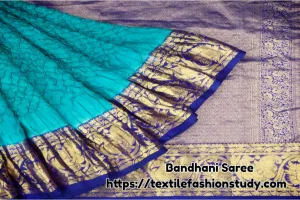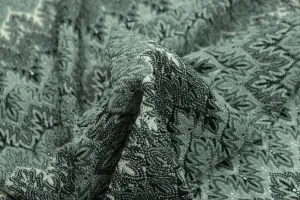Table of Contents
What is a Polyester Fiber?
The physical and chemical properties of polyester fiber are important to know because it is a very important man-made fiber among all other synthetic fibers. When it produces with a long-chain synthetic polymer with ester. Chiefly, polyester is produced by the melt-spinning process. Additionally, it is the most commonly used synthetic fiber among other synthetic fibers. In the first place, DuPont introduced its Dacron polyester brand in 1951, but the material itself was patented earlier in 1941. All over, the use of polyester fabrics increases day by day. Polyester has some physical and chemical properties in a similar fashion, which are important to know.

Physical Properties of Polyester Fiber
The polyester fiber has good elasticity, shape retention, wrinkle resistance, excellent wash and wear performance, as well as durability in its physical properties. As a result, in all kinds of apparel fabrics, the use of polyester fiber has increased. At the same time, polyester fiber is poor in moisture absorption, its clothing makes the wearer feel hot and sticky; it also produces static electricity easily, which reflects in clothing absorbing dust and clinging to the body, which in fact has poor comfort. Moreover, polyester has excellent performance in the dyeing process.
Like cotton or other textile fiber, furthermore, polyester fiber consists of some important physical properties. The following are the important physical properties of polyester:
- Tenacity: The tenacity of polyester fiber is 5–7 g/den
- Elongation at break: Polyester fiber elongation at break is 15 – 30%
- Elastic modulus: Its elastic modulus is 90
- Elasticity: It has good elasticity
- Moisture Regain (MR%): Polyester fiber moisture regain is 0.40%
- Specific Gravity: Specific gravity of polyester fiber is 1.38
- Melting point: Its melting point is 250 °C.
- Volumetric Swelling: It has no volumetric swelling properties
- Ability to protest friction: Polyester fiber has an excellent ability to protect against friction characteristics
- Color: Polyester fiber is white
- Light reflection ability: Light reflection ability of polyester fiber is better than that of other fibers.
- Luster: Polyester fiber has a bright luster, which attracts people to buy it.
Chemical Properties of Polyester Fiber
The following are the various types of chemical properties of polyester fiber:
- Acids: Good resistance to acids in cold conditions. But polyester degrades by H2SO4 at high temperatures.
- Basic: Good resistance to basic in cold conditions, but strong NaOH dissolves polyester in boiling.
- Effect of bleaching: Polyester is not affected by the bleaching process.
- Organic solvent: Organic solvent does not affect polyester fiber.
- Protection ability against mildew: Polyester fiber has good protection ability against mildew.
- Protection ability against insects: This fiber has good protection ability against mildew.
- Dyes: Polyester could be dyed with dispersed azoic color and some pigments.
- Solvents for polyester: Following are the solvents of polyester:
- Chlorinated hydrocarbon.
- F3COOH
- Phenol (in hot condition)
So, during the processing of polyester, we have to consider its physical and chemical properties. The fiber is manufactured in different shapes and sizes for use for specific purposes. Last not least, In a polyester manufacturing unit, the management should follow all compliance issues regarding workplace safety.
In the modern age, the use of polyester fiber has significantly increased due to its demand for different technical purposes. Although it has various negative impacts on the environment, it is cheap in price, which means it’s in high demand. The researcher has invented different uses of polyester fiber in different households as well as in regular life. So, when we select polyester fiber products, we have to be concerned about environmental safety for the next generation.






13 comments
Md. Abdul hannan
Why PET fibre is susceptible to phenol?
Oofyoofer
Yass done with my science .
Napoleon Bonaparte
hi onkar, I would suggest the polyester version 3 produced by polyester company’s incorporated. I think this would be perfect match for you.
Maxine Henson
Why doesn’t some smart person, find a way to easily get wrinkles out of POLYESTER. MY curtains look quell beast. Make something that can be sprayed on and whoosh, the wrinkles go away. You would make a fortune, polyester would be more popular than ever.
Eva Gerling
AMAZING I’m doing a research project in science and this is exactly what I needed. Thank you very much. I will be visiting this website very frequently.
Honeylemon
oh so many physical and chemical properites
Karhtik
Hi, I m Karthik
Just need to know that whether polyester is combustible or not.
Jacob
Hello fellow publisher
love the website.
Maybe you could put in the flammability of polyester, that would be great.
Thanks, Jacob
Mohammad
Dear Brother
Your site is very useful but if you gave the sources from where you are getting information from that would be great. If we use this site for the project professor does not accept it you have not references. If possible add the sources.
Best regards
Mohammad
Onkar Tiwari
Hi, I am Onkar, Knit fabric technologist . looking for the suitable polyester yarn / Nylon yarn for high elongation as well as high stretch at both warp and weft direction in Knit fabric Inter lock based in weft knitting.
Please suggest the best one. Fabric application is backing of artificial leather for automotive.
Regards,/Onkar Tiwari
Karan Sharma
Hello sir
Hotmelt is visible in my knitting fabric and there is hot melt patches in shoes upper how can I resolve this while upper is made please suggest
ghassan
Dear sir
Please advice us about the price for the fiber which can be use for the
stone finsh
best regards
Ghassan
Siva
good